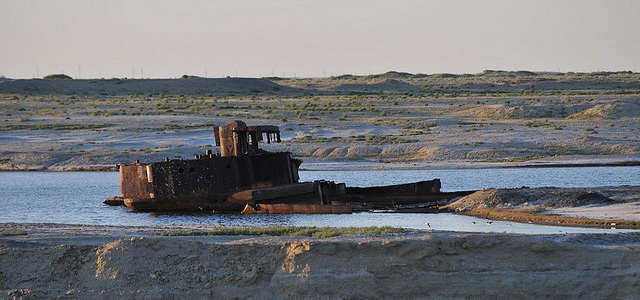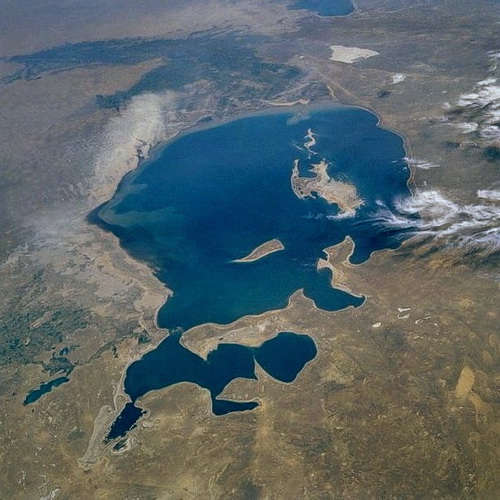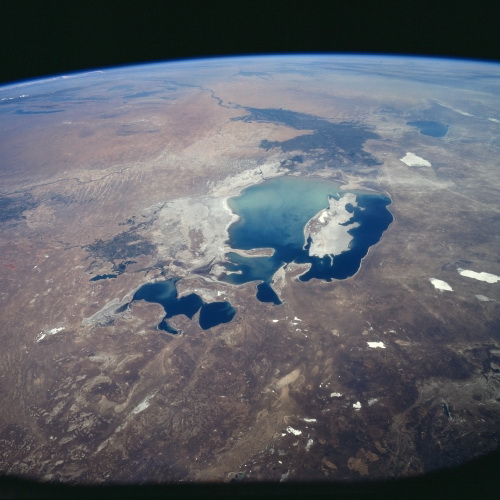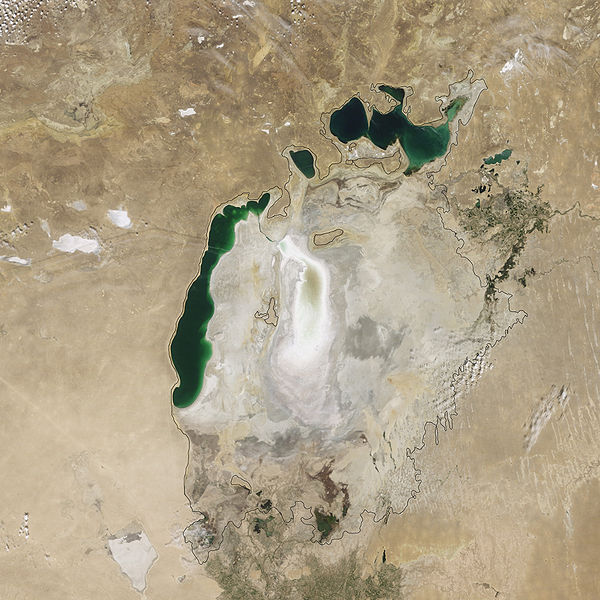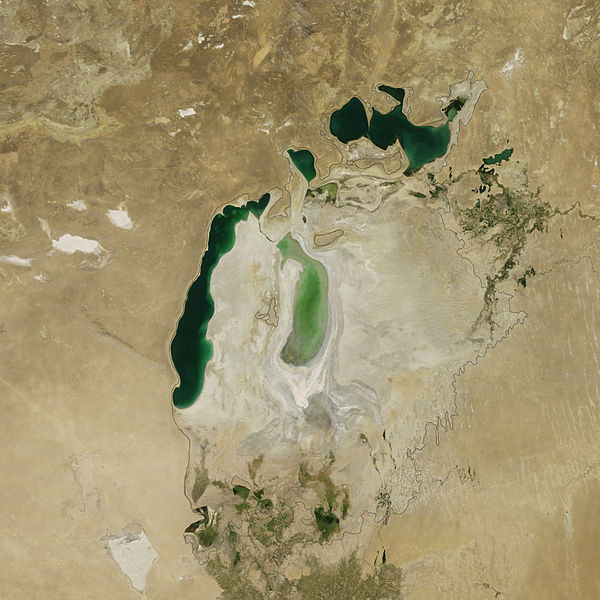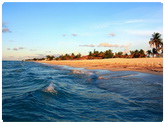| Quick Facts: | Aral Sea |
|---|---|
| Countries: | Kazakhstan Uzbekistan Turkmenistan Tajikistan Afghanistan |
| Major Rivers: | Amu Darya & Syr Darya (Diverted) |
| Max. depth: | 138 m (453 ft) |
| Temperature: | Winter: 0°C Summer: 25°C |
| Salinity: | Unstable (Due to river diversion) |
| Area: | 1.549.000 km² (598.100 mi²) |
The Aral Sea is an inland sea (or saltwater lake) situated in Kazakhstan and Uzbekistan, in Asia. It is located 176 miles (283 km) east of the Caspian Sea, and is fed by the Syr Darya and Amu Darya rivers.
Environmental issues
The Aral was once the world’s fourth largest inland body of water, but it began shrinking in the early 1960s as a result of the diversion of river water to irrigate cotton fields.
The sea level today is 20 meters lower than it was in the 1960s, and the water surface area has shrunk to one-third of its original size.
The shoreline has receded by 100 kilometers, and wrecked fishing boats lie abandoned on the exposed seabed.The former port city of Aralsk in Kazakhstan lies 50 miles (80 km) from Aral’s current shore.
Although the fish industry around the Aral Sea once produced more than 30,000 tons of fish a year, the fishing and the fish-processing industries died in 1982 because of the increased chemical concentrations and salinity.
An isthmus that developed in 1989 divided the shrinking sea into two parts: the Northern, or Lesser, Aral and the Southern, or Greater, Aral. By 2003 the extension of Vozrozhdeniye (Rebirth) Island to the shore had split the Southern Aral into eastern and western portions, leaving a total of three seas.
However, because of improvements in the irrigation infrastructure of the Syr Darya River and the completion of the 8-mile (13-km) Kok-Aral dam in August 2005 which stopped drainage from the smaller, northern sea into the southern sea, the shrinkage of the northern portion was reversed. The fishing and fish-processing industries in the Northern Aral were partially revived as water levels rose and salinity declined. As early as 2006 some excess water could be released into the Southern Aral.
Efforts to save the Aral Sea
In 1993, the five riparian countries connected to the Aral Sea instituted two major international organizations: the Interstate Council for the Aral Sea (ICAS), to develop a rehabilitation program, and the International Fund for the Aral Sea (IFAS), to raise funds for the project. However these organizations did not succeed yet in restoring the Aral Sea, nor is there any
There are a couple of possible solutions for saving the Aral Sea. Scientists proposed a reduction in the area under cotton in Central Asia, where cotton is now sown on up to 80% of the best land.
This would reduce the use of water from the Amudarya and Syrdarya which flow into the Aral Sea.
There is also a plan to link the Aral Sea with the Caspian Sea by means of a 280 km canal, but this, its opponents say, would create new problems.
Fish population
The fish population of the Aral Sea died almost completely, severely affecting the lives of the local population.
Uzbek zoologists have suggested a potential source of riches in the saline waters of the Aral Sea, which would be suitable for breeding brine shrimps, the Uzbek newspaper Khalq Sozi’ reported on 8th April. The brine shrimp, or Artemia salina, which can tolerate highly saline waters, is highly profitable as the primary food for rare types of crayfish and exotic fish and could be a big export earner for Uzbekistan.

